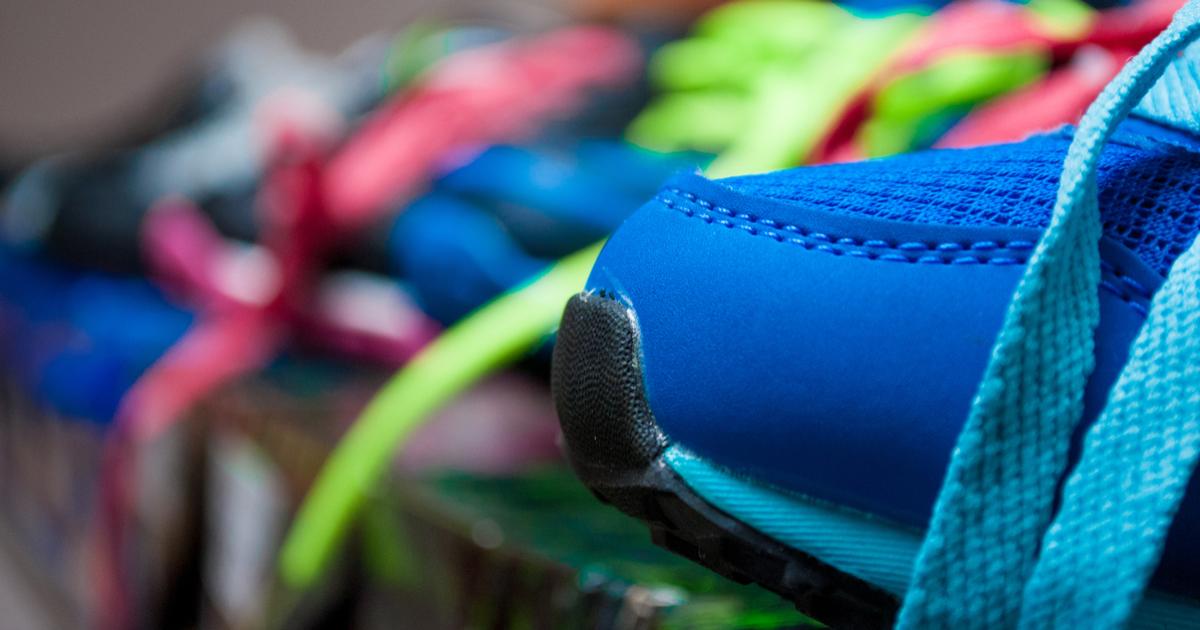Skip the foot pain: 10 tips to help you buy shoes

Without the proper footwear, long days on your feet can wreak havoc on the feet, knees and hips. The bottom line – bad shoes can be your worst enemy.
"We see patients for a variety of foot issues including bunions, hammertoes, foot and ankle arthritis, deformity and plantar fasciitis," says Alexander Sawatzke, MD, orthopaedic surgeon specializing in foot problems. "That's where a properly-fit shoe comes into play. Over the long run, a good shoe that accommodates existing foot problems or imbalances can be very important in preventing foot issues, helping existing foot issues get better and preventing the need for potential surgery."
The right fit
"Your shoe should fit snug but needs space to accommodate painful parts of the foot," notes Dr. Sawatzke. "Extra space in the toe area can be good for hammertoes and bunions Often, a wider shoe or men's size shoe can be a good option for toe deformity and wide forefeet."
Shock absorption
A shoe with a thick cushioned sole will provide shock absorption and can help reduce knee, ankle and hip pain.
Wide toe box
Make sure the toe box is wide enough so that it doesn't push against the toes. This is especially important for people who have existing issues like bunions and hammertoes, explains Dr. Sawatzke. Hoka shoes are known for their wider shoe boxes, and cushioned soles. A stretchy or mesh fabric will also place reduced pressure on bunions and hammertoes.
Stiff sole
For people with great toe arthritis or arthritis pain on top of the foot, a stiffer sole that doesn't bend easily will provide better support and help reduce pain, Dr. Sawatzke says. Look for a stiffer sole, such as a Vibram sole, which also provides good traction and durability. Dansko and Merrill are two shoe brands that typically offer stiffer soles as well.
Arch support or padded instep
Arch supports are especially important if you have flat feet and can sometimes help with plantar fasciitis.. The degree of arch support you need depends on the height of your arches, explains Dr. Sawatzke. "Flat feet can generally benefit from greater arch support where someone with high arches might benefit more from a first ray cutout orthotic, which helps put the foot in a more neutral position to help dissipate force and reduce pain. I would not spend a lot of money on custom orthotics. The most important factor in treating plantar fasciitis is increasing flexibility in the calf muscle by stretching regularly. Shoes like Hoka, Dansko, Merrill and Vibram sole shoes typically provide more arch support."
Rocker bottom
Individuals who suffer from ankle arthritis should consider shoes with rocker bottom soles. This type of shoe has a thicker than normal sole with a rounded heel and toe area (toe and heel areas curve up) to reduce pressure on the ankle by helping you roll through your gait, Dr. Sawatzke explains. Some Sketchers provide this type of shoe structure.
Change your shoes after noticeable wear and tear
Occasionally check the sole of the shoe and look for wear on the sides of the shoe and heel area to ensure you're still getting the support and stability you need. Also, if you start to notice an imprint of your foot inside the shoe, it's time to change them out.
Stretch and ice
"One of the best things you can do daily to help prevent problems like plantar fasciitis and Achilles tendonitis, is to stretch your calves before, during, and after a long day," says Dr. Sawatzke. Place your foot on a step with your heel hanging off. Push your heel down and keep your knee straight for a long even stretch. Night splints may also help chronic plantar fasciitis which helps stretch the calves throughout the night while you sleep. Icing can be helpful for arthritic feet. If you have Achilles tendonitis, plantar fasciitis or other foot pain that continues after four to six weeks of regular stretching and icing, consider seeing your doctor for medical advice, Dr. Sawatzke advises.
Give them a break
Don't forget to take care of yourself. If your feet and legs are aching and you feel yourself getting tired, sit down for a break and stretch your legs. Whatever you need to do, do it. Your feet will thank you!
Give your feet some TLC
A good massage can do wonders. Taking care of your feet means more than comfortable shoes. Trim your nails so they aren't rubbing against the inside of your shoes or getting snagged when you're putting on your socks. Help relax the muscles and tendons in your feet by soothing them with lotion and a nice soak. If you don't want to spend the money for a pedicure, trim your toenails at home with clippers and soak them in your bathtub or kitchen sink (Rinse the sink out after please!) Again, your feet will thank you.







